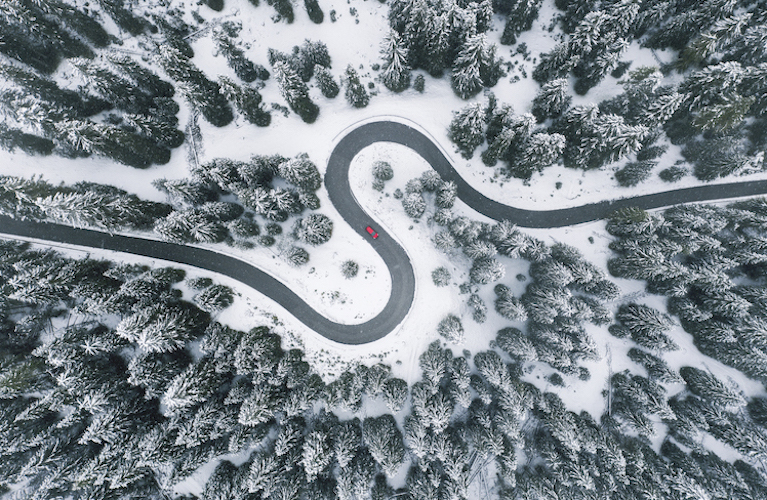From the three-act structure, to finding the story in the edit, award-winning travel filmmaker, Jennifer Peedom reveals her narrative secrets.
.jpg) Photo © Jennifer Peedom
Photo © Jennifer Peedom
- The three-act structure in documentaries
- Finding the story in the edit
- Drama is conflict
- Creating a structure
- Find your character
- What inspires you?
I’m a big believer in narrative structure in documentaries. I think documentary filmmakers can learn a lot from fictional work and I routinely look to other movies – both drama and documentaries – when looking for inspiration for the narrative structure of my films.
The three-act structure in documentaries
At the very least, your film should have a beginning, middle, and an end. For this reason, the three-act structure is a good place to start. The basic rules of storytelling apply to documentaries as much as they do to narrative fiction. These are:
- Story
- Conflict
- Structure
- Character.
You’ll find these elements in all great documentaries, and the more familiar you are with them, the better you’ll be able to draw them out of your own story, even if that story is based on complex real-life events.
Finding the story in the edit
The biggest difference between a documentary and drama is that in a documentary, you don’t write the dialogue, but go out and shoot it as it happens. The ‘writing’ process in a documentary often happens in the edit.
Once you have completed your shoot, your rushes [the raw footage from the day’s shooting] become your raw material. This is where you return to your scene cards and whiteboard and measure them against dramatic criteria. This is where the sifting, eliminating and rearranging process begins. It’s here that you’ll need to work out the story development and find the right dramatic structure for your film.
Those essential elements (story, conflict, structure and character) are the elements that will provide the framework for your film. Without these, it will be difficult to maintain the interest of an audience.
You need to decide what kind of story you are telling (hopefully you will have figured this out before the shoot, but if not, you definitively need to do it now). This will help you find the best structure for your film. It will probably fall into one of the following categories: goal-oriented, issue-oriented or a focus on journey and transformation. You can figure this out by asking yourself some basic questions: what is the issue that underlines my film? What is the goal of my main character? How does he/she change in the pursuit of that goal? What do they learn?
Drama is conflict
You can’t manufacture conflict in a documentary, but if there isn’t any in your story, you probably don’t have a film. Put simply, conflict is the thing that stands between your character(s) and their goal(s). There are many types of conflict – and here are a few examples: inner conflict, relationship conflict, and societal conflict. Conflict can be external (a political system, a mountain) or internal (self-doubt).
Conflict always needs an opponent, which could be nature (as in the film Touching the Void), a simple villain (big business, a mining company), or even time (think of the ticking clock in the rescue of the schoolboys from the Thai cave).
Creating a structure
Often real life doesn’t fit into a classic ‘hero’s journey’ structure. But learning the basic rules of structure will, at the very least, get you asking the right questions. If you think about a basic three-act structure, the same rules apply to documentary as they do to drama:
Act 1 – Sets up the premise. Who are the main characters and what problems do they face? What stands between them and their goal?
Act 2 – This is where your character(s) fight to achieve their goal. Complications set in and things get messy. Problems compound and your character(s) is put under pressure.
Act 3 – This is where your story finds a resolution. Your character either achieves their goal or fails (My film Solo is an example of a classic structure where the hero doesn’t achieve the goal) and hopefully has changed or transformed in some way as a result of the journey.
When you’re developing a film, I strongly suggest you read further on story structure. You don’t need to find books that are specific to documentaries either. Any good book on story structure will help you, just apply the ideas to your real-life situation. Here’s a good list.
Find your character
Even if your film is about an idea or a place – it will always need a character to take us on that journey. This may be a community of people, but you’ll still need at least one main protagonist that articulates their goal. Choosing a protagonist is a very individual thing but choose someone that has a strong goal and is prepared to be filmed.
What inspires you?
The best way to understand all of the rules above is to watch other films and see how these rules apply. When I’m developing a new project, I watch lots of films and documentaries with that specific project in mind.
There are so many great examples of well-structured documentaries out there, all of which draw on the rules above. Some of my favorites are:
Kevin Macdonald’s One Day in September; Touching the Void.
Werner Herzog’s Grizzly Man
Asif Kapadia’s Senna; Amy
Errol Morris’s Thin Blue Line (Or any of his films)
Laura Poitras’s Citizen Four.
DocPlay is a great hub for feature documentaries. But I also routinely draw inspiration from the world of fiction. I’ve recently been developing a project about a famous mountaineer and I am watching a lot of drama in order to find the right structure, find examples of theme, and specific examples of how a character responded to conflict or an obstacle. These have included the following movies: Shine, Good Will Hunting, Apollo 13, The Imitation Game, and many more.
Related articles
Simple and flexible travel insurance
You can buy at home or while traveling, and claim online from anywhere in the world. With 150+ adventure activities covered and 24/7 emergency assistance.
Get a quote

No Comments